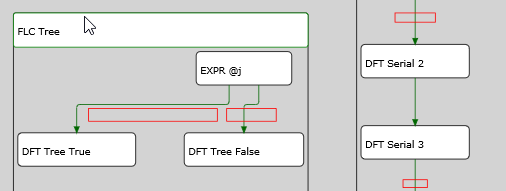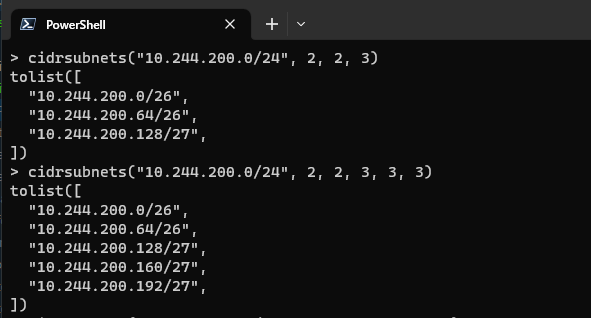
In the third part of a series, I focus on drawing the constraints’ descriptions and the colours. And also a bit of PowerShell for automation.
Automating the layout extraction
Previously I prepared the file with a layout by hand - I copied the CDATA content of the/DTS:Executable/DTS:DesignTimeProperties element to the XML file and saved it. It’s a tedious task, so I wrote a PowerShell script New-Diagram.ps1. It has two paths as the parameters - the package to analyse, and the output file. The content is just three lines of code (it could fit in one, but I split it for readability):
# Find <DesignTimeProperties>, CDATA section
$xpath = '/DTS:Executable/DTS:DesignTimeProperties/text()'
# We have a namespace, so add a declaration; just copy the values from the .dtsx file
$namespace = @{DTS = 'www.microsoft.com/SqlServer/Dts'}
# The Command
(Select-Xml -Path $packagePath -XPath $xpath -Namespace $namespace | Select-Object -ExpandProperty Node).Value | Out-File $outputPath
Select-Xml gets the required information from the .dtsx package using an XPath expression and returns the Node. I take its Value and save to the file.
As an addition, I also wrote the diagram2svg.ps1 script to run everything from PowerShell console. The diagram2svg.bat version is still available.
Back to drawing
To get more information, I created an extended version of the package. It has Completion and Failure constraints, as well as OR version. I also added more annotations.
I know that I have to draw the descriptions if I see an <EdgeLayout.Labels> element within the <EdgeLayout>. It contains an empty tag <mssgm:EdgeLabel> with two attributes: @BoundingBox and @RelativePosition. Only the first is interesting (the second always has a fixed value Any) - it defines the area for the description. It looks like this:
<EdgeLayout.Labels>
<mssgm:EdgeLabel
BoundingBox="-176.548522135417,29.4736842105263,161.7637109375,16"
RelativePosition="Any" />
</EdgeLayout.Labels>
According to the documentation, the @BoundingBox contains “value that specifies the coordinates of the four vertices of the bounding box for the edge label”. It’s not. The numbers are x, y, width and height of the box, so I can draw it in SVG using a <rect> element.
But should I draw them? In the beginning - yes. Just like with the rectangle around the annotation area - to get used to the diagram structure and get the idea of what the values mean.
OK. I know where I have to write the descriptions. Now it’s time to get what I have to write. Scrolling to the bottom of the Package.Diagram.xml I see only two pieces of information:
<PrecedenceConstraint
design-time-name="Package\\SEQC MAIN\\FLC Tree.PrecedenceConstraints\[Constraint\]">
<ShowAnnotation>ConstraintOptions</ShowAnnotation>
</PrecedenceConstraint>
<PrecedenceConstraint
design-time-name="Package\\SEQC MAIN\\FLC Tree.PrecedenceConstraints\[Constraint 1\]">
<ShowAnnotation>ConstraintDescription</ShowAnnotation>
</PrecedenceConstraint>
The <ShowAnnotation> values come from the Properties of the precedence constraints. So, for the Package\SEQC MAIN\FLC Tree.PrecedenceConstraints[Constraint] constraint I need to write the ConstraintOptions, which means “automatically annotate using the values of the Value and Expression properties”.
Reading from the .dtsx file
To get the Value and Expression properties I need to find the precedence constraint in the .dtsx file during the XSL transformations. It requires three changes in the package2svg.xsl:
- I have to pass the name of the
.dtsxfile - I have to read the XML from the
.dtsxfile - I have to use the
DTSnamespace because it’s the namespace of the .dtsx file
The Saxon XSLT processor has a nice feature - after all the switches for the Transform command I can set the parameters defined at the top level of the XSL file using the key=value pairs. So I define the <xsl:param name="packagePath" as="xs:string" required="yes" /> within the XSL file and extend the command (lines split for readability) to pass the packagePath:
Transform `
-s:Package.Diagram.xml `
-xsl:package2svg.xsl `
-o:Package.Diagram.svg `
packagePath=DTSX2SVG\\Package.dtsx
To get the content of the .dtsx file I use the XSLT document() function:
<xsl:variable name="packageContent" select="document($packagePath)" />
The last thing is to add the DTS namespace to the stylesheet declaration:
<xsl:stylesheet version="2.0"
xmlns:xsl="http://www.w3.org/1999/XSL/Transform"
xmlns:xs="http://www.w3.org/2001/XMLSchema"
xmlns:gl="clr-namespace:Microsoft.SqlServer.IntegrationServices.Designer.Model.Serialization;assembly=Microsoft.SqlServer.IntegrationServices.Graph"
xmlns:mssgle="clr-namespace:Microsoft.SqlServer.Graph.LayoutEngine;assembly=Microsoft.SqlServer.Graph"
xmlns:mssgm="clr-namespace:Microsoft.SqlServer.Graph.Model;assembly=Microsoft.SqlServer.Graph"
xmlns:DTS="www.microsoft.com/SqlServer/Dts"
>

To read the values from the .dtsx file I just use the packageContent variable as the starting point and pass the XPath, like $packageContent//DTS:PrecedenceConstraint[@DTS:refId=$localId]/@DTS:Expression.
The descriptions for the constraints are explicit (ShowAnnotation) or implicit (the SSIS defaults, like the annotation for Completion or Failure constraints). I define two variables: precedenceConstraintValue and value. The first contains the description based on the layout file information, the second based on the default SSIS behaviour. The algorithm to present the proper information uses the series of xsl:choose/xsl:when commands that read the $packageContent.
Using the same technique, I set the colour for the constraint reading the DTS:Value and the type of the constraint (OR/AND). For the latter I analyse the DTS:LogicalAnd attribute - if it exists I add the stroke-dasharray SVG attribute:
<xsl:if test="count($packageContent//DTS:PrecedenceConstraint[@DTS:refId=$localId]/@DTS:LogicalAnd) = 0">
<xsl:attributename="stroke-dasharray">5</xsl:attribute>
</xsl:if>
And that’s it! Now I have the package with the constraint descriptions, colours and shapes. There are still some uncovered parts, but I will deal with them later.
Up to now, I drew the Control Flow. The next part will focus on the Data Flow and Event Handlers.







